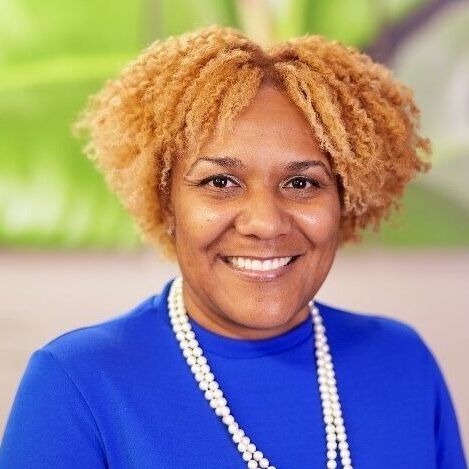In 2015, Felicia Sanders joined Michelin North America, first as an operations manager and later as the plant manager of the passenger car tire manufacturing facility, supporting 600 employees. Then in 2021, she earned a promotion to what many would call their dream job: the organization’s CHRO, now responsible for 22,500 employees at 34 Michelin plants in the U.S. and Canada. The transition between the roles represented a career pivot—one that some HR professionals initially might have felt overwhelmed, and even intimidated, by. But not Sanders.
Consider her resume. She holds a bachelor’s degree in chemical engineering from the University of Maryland Baltimore County, a master’s degree in business administration at Columbia Business School and an HR strategy certification from the Ross School of Business at the University of Michigan.
While her educational background and diverse career experiences—with titles that include product manager, strategic business analyst and growth strategy manager—facilitated the transition, there are also many similarities between the HR function and her previous work; namely, she says, success is dependent upon strong leadership and an investment in people. She spoke to HRE about how she made the jump, and the HR opportunities and challenges facing Michelin.
HRE: You moved into the top HR position from outside HR. In what areas did you need more experience or knowledge?

Sanders: The biggest challenge was understanding our entire population. We’ve done a lot of acquisitions over the last few years. We’re growing in our services platform—around and beyond tires. So, getting to know more about that business would have been the biggest learning opportunity for me. It wasn’t intimidating; it was actually exciting.
HRE: With a solid background in engineering and business, why go into HR?
Sanders: I continue to upskill myself. There’s a portion of my experience where I was in HR, not functionally, but certainly involved in some sophisticated facets of HR. I was involved in DE&I initiatives early in my career and leadership development before Michelin in other roles across my career. Leadership is a passion of mine. I’m a mentor and strongly believe in helping people realize their potential.
HRE: What COVID lessons did you take away from your time as plant manager that you adopted as CHRO?
Sanders: We have definitely made a shift in our focus to help employees understand their access to a portion of their benefits that involve mental health and wellbeing. We’ve had some grassroots efforts of support groups by employees because this is such a big need in our population. We also made functional changes to the way we recruit. When we saw attrition becoming more of a challenge in some parts of our business, we had to speed up processes that, in the past, didn’t have to go as fast. We learned how to train people faster, hire people faster and, in a lot of our factories—because so many people could be out at one given time with quarantine—we had to learn how to do business differently. We’ve gotten better and more agile in a lot of ways.
Read more Insights from a CHRO here.
HRE: You say the post-COIVD workforce has changed. What have you noticed at Michelin?
Sanders: People joining our company may have a different reason than people did five years ago. Their intention to stay may be based on a different set of principles. It’s not a one-size-fits-all. We definitely spent a lot of time refreshing, updating or significantly changing our approach in assessing needs. Do we need to look at medicine differently, the way we operate or our hours differently? There are lots of things on the table that we have taken a hard look at that, in the past, were things we didn’t necessarily touch. Shifts in expectations have changed the demands on managers. We’re spending a lot of time on management quality. There was no rulebook for COVID. Managers learned to manage this crisis. Now we have to give them another set of tools to engage in what is now our new normal environment.
HRE: What are some top concerns among CHROs in manufacturing?
Sanders: We’ve seen a shortage of an available workforce. Companies will have to make deeper connections in the community than the ones they already have. In our case, we have deep connections with trade and technical schools and STEM programs. But we may need to make deeper connections into the middle school to build up this pipeline of talent. At the same time, our current population must come into the digital mindset by finding better and more efficient ways to work. We need to use HR data and analytics to make decisions and give us more insight into both our population and the labor force in general. We started analyzing internal data on the top reasons people have declined [our job offers]. It’s changed over the course of time.
HRE: As an HR leader, how do you measure your own success?
Sanders: I absolutely find pleasure in helping people develop and grow. In the end, if they are promoted or move on to something bigger, then I’ve done my job.
The post A former engineer became the top HR exec at Michelin. Here’s how appeared first on HR Executive.